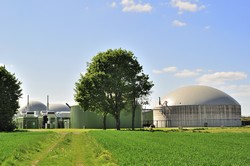Hydrogen from wet biomass
To date, hydrogen could only be extracted from biomass – namely, any compostable material – using large amounts of energy. For instance, wet biomass must be dried intensively before processes. But aqueous-phase reforming (APR) offers an attractive alternative to the drying process. In this method, wet biomass comes into contact with a catalyst. Chemical reactions help break down the raw material and release almost pure hydrogen. Importantly, APR does not consume much energy and is carried out at low temperature and pressure. The EU-funded project SUSFUELCAT(opens in new window) (Sustainable fuel production by aqueous phase reforming – understanding catalysis and hydrothermal stability of carbon supported noble metals) looked for the key to making the process more efficient: catalysts. Commonly used catalysts contain expensive precious metals such as platinum and palladium, which are distributed over ceramic plates. The SUSFUELCAT team aimed to reduce the amount of precious metals or replace them with other metals without affecting the process efficiency. Specifically, carbon-based materials used as carriers promise long-term stability and environment-friendly recycling of metals. For the optimisation of such catalysts, researchers used a combination of state-of-the-art methods. On a molecular level, they used computer simulations. New analysis techniques allowed researchers to monitor the evolution of APR. Specifically, using spectroscopy, it was possible to see inside the reactor. Long-term experiments conducted by industrial partners were also an important part of the optimisation process. SUSFUELCAT has made an important contribution towards reducing Europe’s reliance on fossil fuels by improving the utilisation of renewable energy sources while reducing the cost of hydrogen production. Project results will also have the added benefit of improving catalyst efficiency in related processes.







